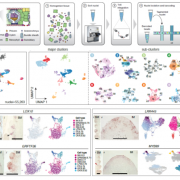
A cis-regulatory atlas in maize at single-cell resolution (bioRxiv)
Plant Science Research Weekly
Cis-regulatory elements (CREs) are DNA sequences found near or within genic regions that drive proper gene expression in time and space. Thus, CREs play essential roles in the diversification of spatially distinct cell-types with specialized function in multicellular organisms. To identify CREs underlying…
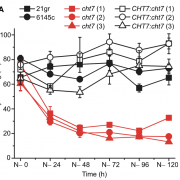
How to go quiet: CHT7 regulates cell cycle exit in Chlamydomonas (Plant Cell)
Plant Science Research WeeklyMany microbes enter a state of low metabolic activity, called quiescence, when the conditions for growth and division become unfavorable. The transition from active proliferation to quiescence involves a comprehensive restructuring of cellular metabolism, accumulation of storage compounds, and an orderly…
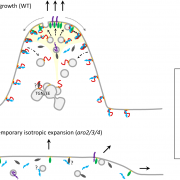
Go polar: Regulation of Rho GTPases by ARO proteins (Nature Plants)
Plant Science Research WeeklyPolar cell growth is a key feature in plant organs like root hairs, trichomes and pollen tubes. Kulich and co-workers have identified novel regulatory elements governing the polar growth of root hairs and trichomes in Arabidopsis thaliana. Studying a group of proteins named ARMADILLO REPEAT ONLY (ARO),…
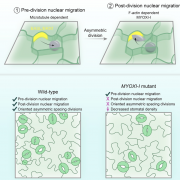
Opposing, polarity-driven nuclear migrations underpin asymmetric divisions in stomatal patterning (Curr. Biol.)
Plant Science Research WeeklyAsymmetric cell divisions (ACDs) are often used by organisms to generate different cell sizes, each adopting a different cell fate. In plants, stomatal development provides an example of an ACD-derived patterning mechanism. Several proteins are known to be implicated in ACDs, like BREAKING OF ASYMMETRY…
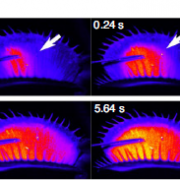
Calcium dynamics during trap closure visualized in transgenic Venus flytrap (Nature Plants)
Plant Science Research Weekly
For centuries, carnivorous plants and the mechanisms they use to capture prey have been enigmas. While some clarity regarding the molecular mechanisms is beginning to emerge, Suda and colleagues have uncovered a vital role for calcium (Ca2+) signals in trap closure in Venus flytrap. The researchers…
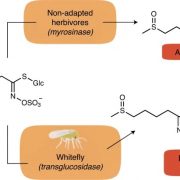
Glucosylation prevents plant defense activation in phloem-feeding insects (Nature Chem. Biol.)
Plant Science Research WeeklyBrassicas produce specialized metabolites called glucosinolates that can be enzymatically converted to release toxic compounds. The catalyzing enzyme is stored in a separate subcellular compartment, so upon wounding by a herbivore the enzyme and substrate mix and release the toxin. Phloem-feeding insects…

Plant Science Research Weekly: October 23, 2020
WWR Full PostPerspective: Multiplying the efficiency and impact of biofortification through metabolic engineering
As heterotrophs, we are what we eat. One of the UN Sustainable Development Goals is to end all forms of hunger, including the “hidden hunger” that results from nutrient deficiencies. Van Der…

Recognizing Plant Direct authors: Yan Wang
Plant Direct, Plant Direct: Author ProfilesYan Wang, first author of Plasticity and the role of mass-scaling in allocation, morphology and anatomical trait responses to above and belowground resource limitation in cultivated sunflower (Helianthus annuus L.)
Current Position: Lecturer, College of Forestry, Shandong Agricultural University, China
Education:…

On the Inside: A Glucose-Dependent Feedback Loop Involved in Root Growth
Plant Physiology: On The InsideSucrose is the major source of carbon for plant cells, and consequently sucrose catabolism in plants is one of the largest metabolic fluxes in primary carbon assimilation. However, sucrose cannot be directly utilized in plants. Therefore, after arriving at a sink, sucrose must be hydrolyzed. In the…

